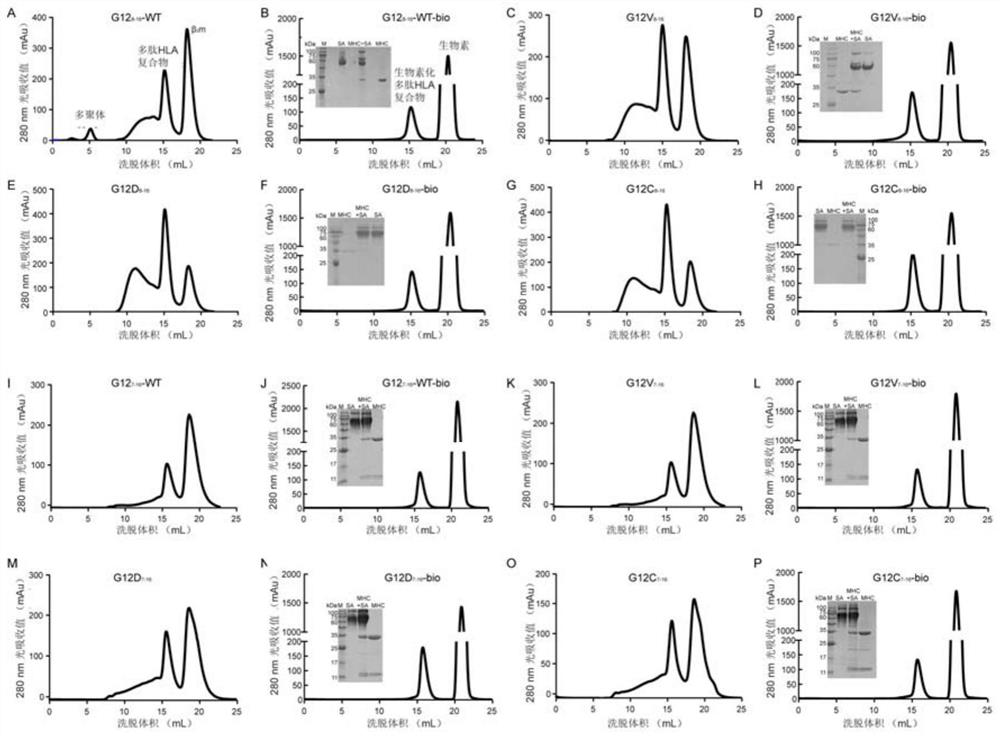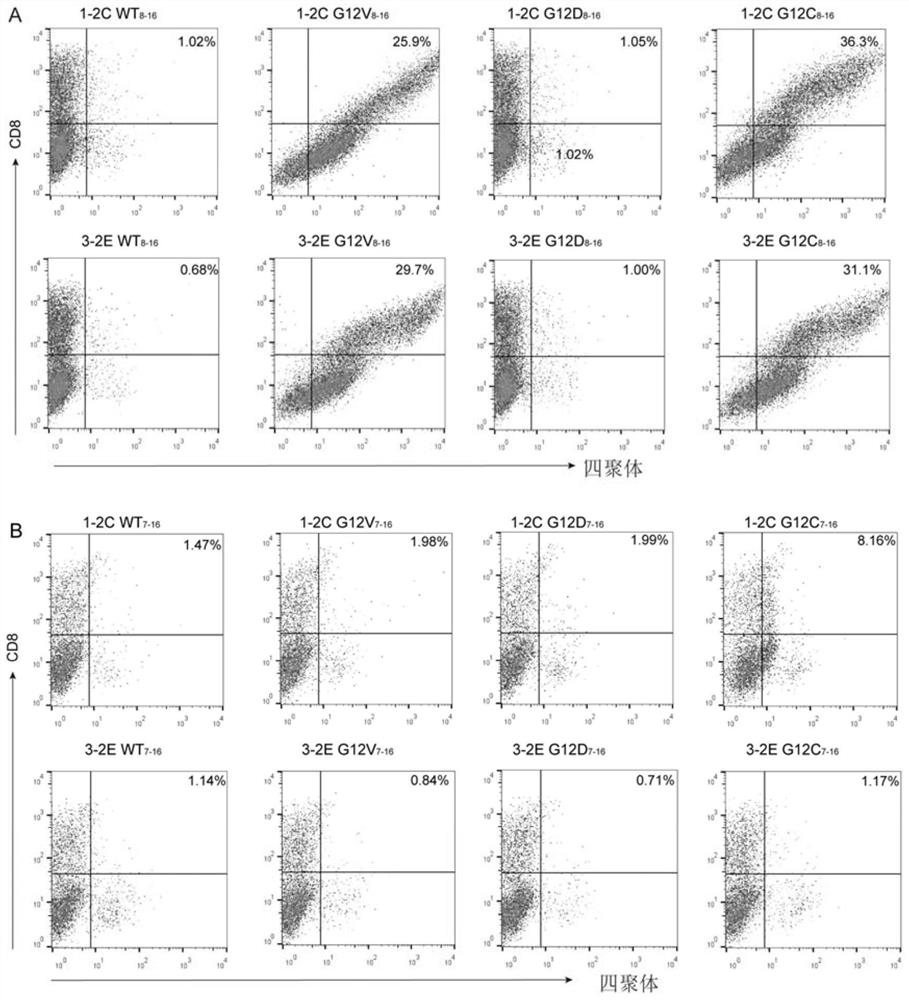Screening and anti-tumor application of KRAS mutation specific T cell receptor
A cell receptor and specific technology, applied in the field of medicine, can solve the problems of lack of detection and treatment of tumor drugs
- Summary
- Abstract
- Description
- Claims
- Application Information
AI Technical Summary
Problems solved by technology
Method used
Image
Examples
Embodiment 1
[0072] Example 1. KRAS-G12 mutant polypeptide-specific T cell sorting and TCR gene cloning
[0073] In this example, HLA-A11-restricted epitope polypeptides predicted to have KRAS-G12 mutations were first synthesized, and these polypeptides were used to immunize mice, and T cell response screening was performed by ELISPOT experiments, and the immunogenic mutant polypeptides were selected. At the same time, tetramers of these KRAS mutant polypeptides and HLA-A11 were prepared, and CD3 was selected from splenocytes of immunized mice by staining with CD3 and CD8 antibodies. + CD8 + The T cells were sorted to obtain the KRAS-G12 mutant polypeptide-specific T cells.
[0074] 1. Prediction of HLA-restricted epitopes of KRAS-G12 mutant polypeptides
[0075] Through the NetMHC-4.0 online prediction system, the HLA-A11 restricted T cell epitope polypeptide was predicted for the polypeptide with KRAS-G12 mutation. It was found that the KRAS-G12V epitope has a strong affinity with HLA...
Embodiment 2
[0120] Example 2. KRAS-G12V 8-16 (VVGAVGVGK) / HLA-A11 tetramer binding to cells expressing 1-2C and 3-2E TCR
[0121] In this example, the inventors further confirmed that the screened 1-2C and 3-2E TCRs have the ability to target KRAS-G12V 8-16 (VVGA V GVGK) / HLA-A11 specific recognition. In addition, this example also found that 1-2C and 3-2E can be combined with KRAS-G12V presented by HLA-A11 8-16 (VVGA V In addition to GVGK), it can also bind to KRAS-G12V presented by HLA-A03 8-16 (VVGA V GVGK) combined.
[0122] 1. 1-2C and 3-2E TCR binding specificity verification
[0123]First, the α chain and β chain variable region (V region) of 1-2C and 3-2E TCR (1-2C: nucleic acid sequence as shown in SEQ ID NO: 1, amino acid sequence as shown in SEQ ID NO: 6 , and 3-2E: the nucleic acid sequence is shown in SEQ ID NO: 7, the amino acid sequence is shown in SEQ ID NO: 11) gene and human TCR α chain and β chain constant region (C region) gene (synthesized by Hongxun Biotechnolo...
Embodiment 3
[0145] Example 3. Preparation of 1-2C and 3-2E TCR-T cells and their responses to different mutant polypeptides of KRAS
[0146] In this example, the 1-2C or 3-2E TCR gene was introduced into peripheral blood mononuclear cells (PBMC) or CD8 T cells isolated from healthy volunteers with HLA-A11 genetic background as TCR-T effector cells. KRAS-G12 wild-type polypeptide 8-16 (VVGA G GVGK), G12V 8-16 (VVGA V GVGK), G12D 8-16 (VVGA D GVGK), G12C 8-16 (VVGAC GVGK) mutant polypeptides were added to the above-mentioned TCR-T effector cell system for co-cultivation, and the level of IFN-γ secreted by the effector cells and target cells presenting KRAS wild-type and mutant polypeptides was detected, and the effect on 1-2C or The effect of 3-2E TCR on target cells expressing KRAS wild-type and mutant polypeptides / HLA-A11 was evaluated. The specific operation is as follows.
[0147] 1. Preparation of lentivirus expressing 1-2C and 3-2E TCR
[0148] The 1-2C and 3-2E TCR lentivira...
PUM
| Property | Measurement | Unit |
|---|---|---|
| Affinity | aaaaa | aaaaa |
| Affinity | aaaaa | aaaaa |
Abstract
Description
Claims
Application Information
 Login to View More
Login to View More - R&D
- Intellectual Property
- Life Sciences
- Materials
- Tech Scout
- Unparalleled Data Quality
- Higher Quality Content
- 60% Fewer Hallucinations
Browse by: Latest US Patents, China's latest patents, Technical Efficacy Thesaurus, Application Domain, Technology Topic, Popular Technical Reports.
© 2025 PatSnap. All rights reserved.Legal|Privacy policy|Modern Slavery Act Transparency Statement|Sitemap|About US| Contact US: help@patsnap.com



